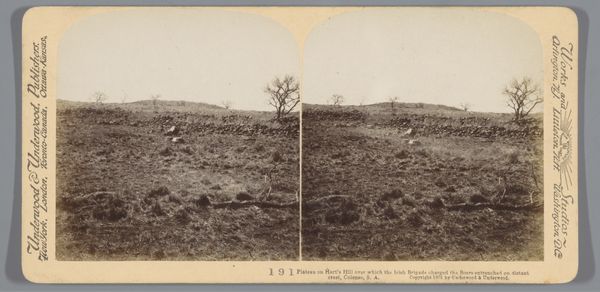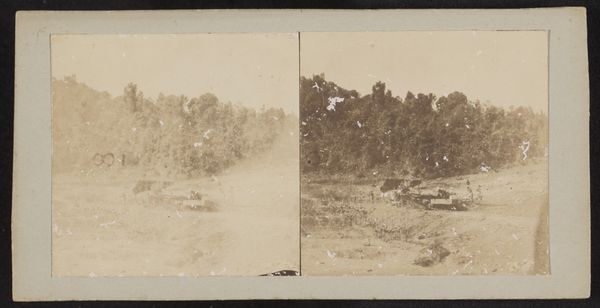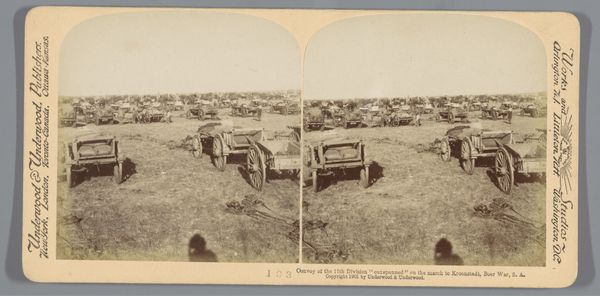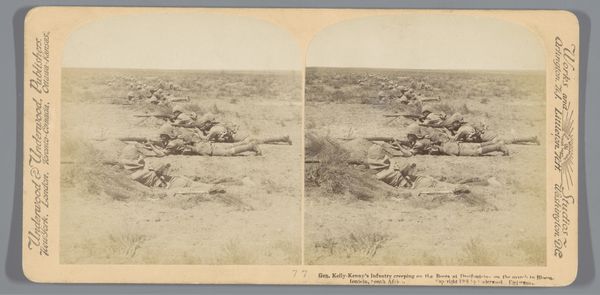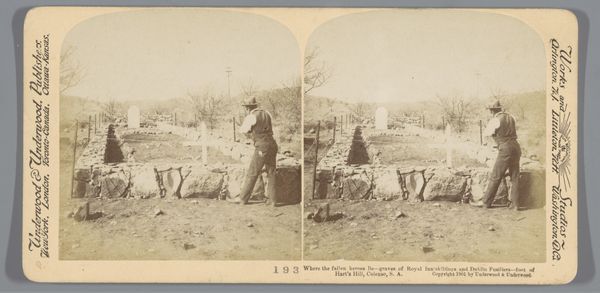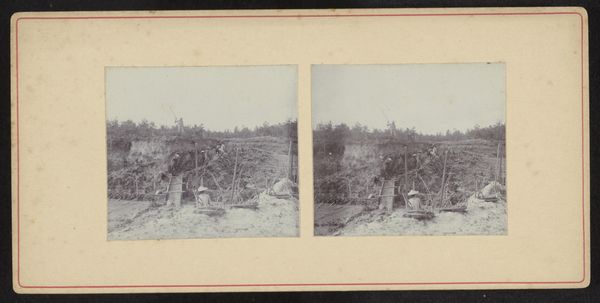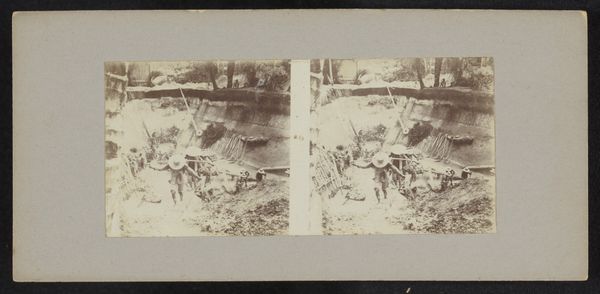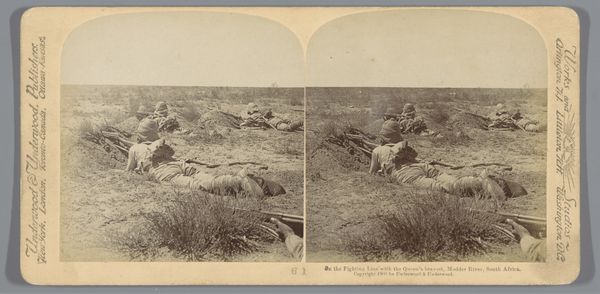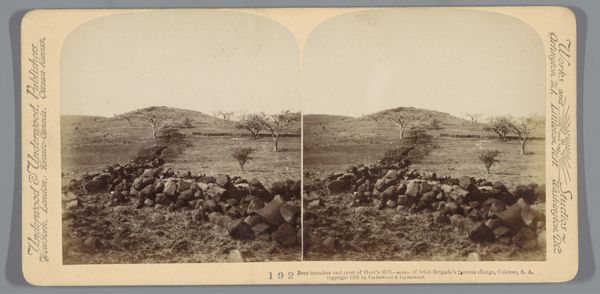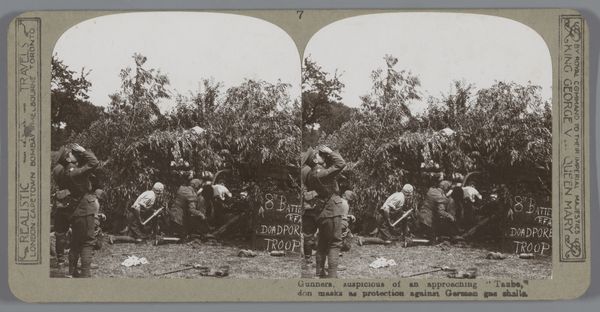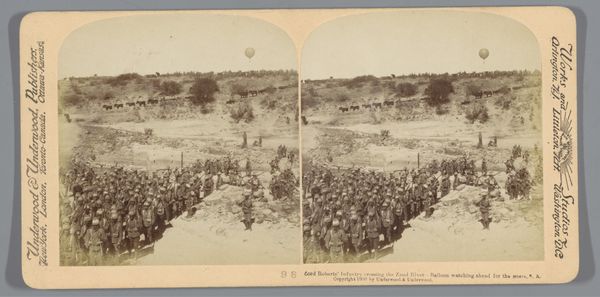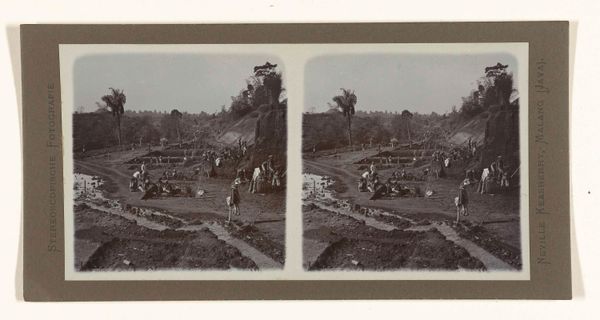
A fine charge by the Leicesters baffles the Kaiser's bid to wipe out the Old Contemptibles, Ypres 1914 - 1918
0:00
0:00
print, photography, gelatin-silver-print
#
pictorialism
# print
#
landscape
#
photography
#
gelatin-silver-print
#
history-painting
#
realism
Dimensions: height 85 mm, width 170 mm
Copyright: Rijks Museum: Open Domain
Curator: Looking at this gelatin-silver print from sometime between 1914 and 1918 titled, "A fine charge by the Leicesters baffles the Kaiser's bid to wipe out the Old Contemptibles, Ypres," I'm immediately struck by its depiction of early 20th-century warfare. There’s something stark about the scene. Editor: It is somber. A field strewn with bodies beneath what appears to be a blasted orchard. It's unsettling how the photograph transforms human forms into mere material left behind in the landscape. What means were available to make something like this available at the time, I wonder? Curator: These images would circulate as stereo cards – a mass produced medium viewed through a stereoscope to create a three-dimensional image. A sanitized way to bring the war home, under royal patronage, no less! Editor: Royal patronage and mass production - those factors reframe the labor that goes into documenting war in this way. Each print is a trace of the photographers labor, the chemical processes, and, of course, the historical scene depicted. Curator: The history presented is carefully constructed. Note the heroism implied in the title despite the scene of utter devastation. It romanticizes a moment, framing it as a strategic victory amidst broader suffering. We see not the squalor of trench warfare, but an idealized struggle of British troops holding the line. Editor: Yes, "a fine charge" – it masks the brutal realities of industrial warfare and shifts it into almost an aesthetic experience. Even the pictorial style seems at odds with the scene it depicts, almost as if beautifying industrial carnage. It almost aestheticizes destruction through its formal qualities, light, shadow, and the arrangement of bodies. Curator: Precisely! The "Realistik" branding on the print is ironic, given the selected viewpoint and propagandistic intent. These weren't meant to be objective documents but tools of nationalistic fervor, reinforcing particular narratives about duty and sacrifice. Editor: It speaks volumes about how conflict can be packaged for mass consumption, turning something as raw and visceral as war into a commodity to be possessed and viewed. It's easy to miss the point that for every print manufactured, so many suffered immensely, and their stories are left on the battlefield as we see here. Curator: Seeing it this way emphasizes the need to critically examine not only the image but also the mechanisms through which such images were distributed and understood during wartime. It's about tracing how narratives were constructed. Editor: A truly haunting artifact – not just for what it shows, but what it elides and the physical realities of the labor required to mass produce it.
Comments
No comments
Be the first to comment and join the conversation on the ultimate creative platform.
